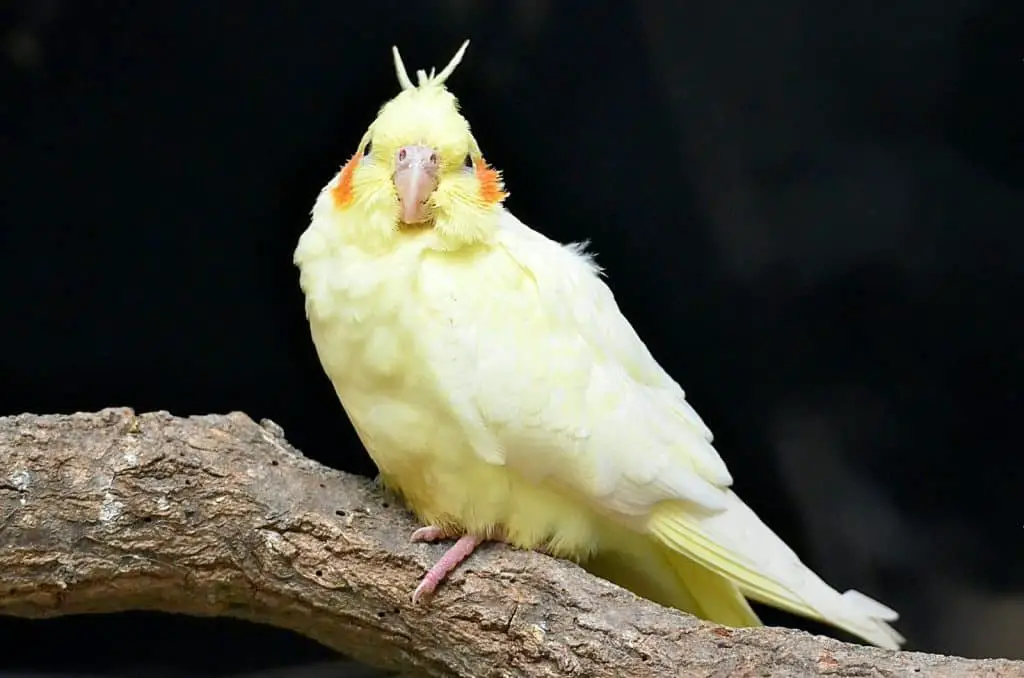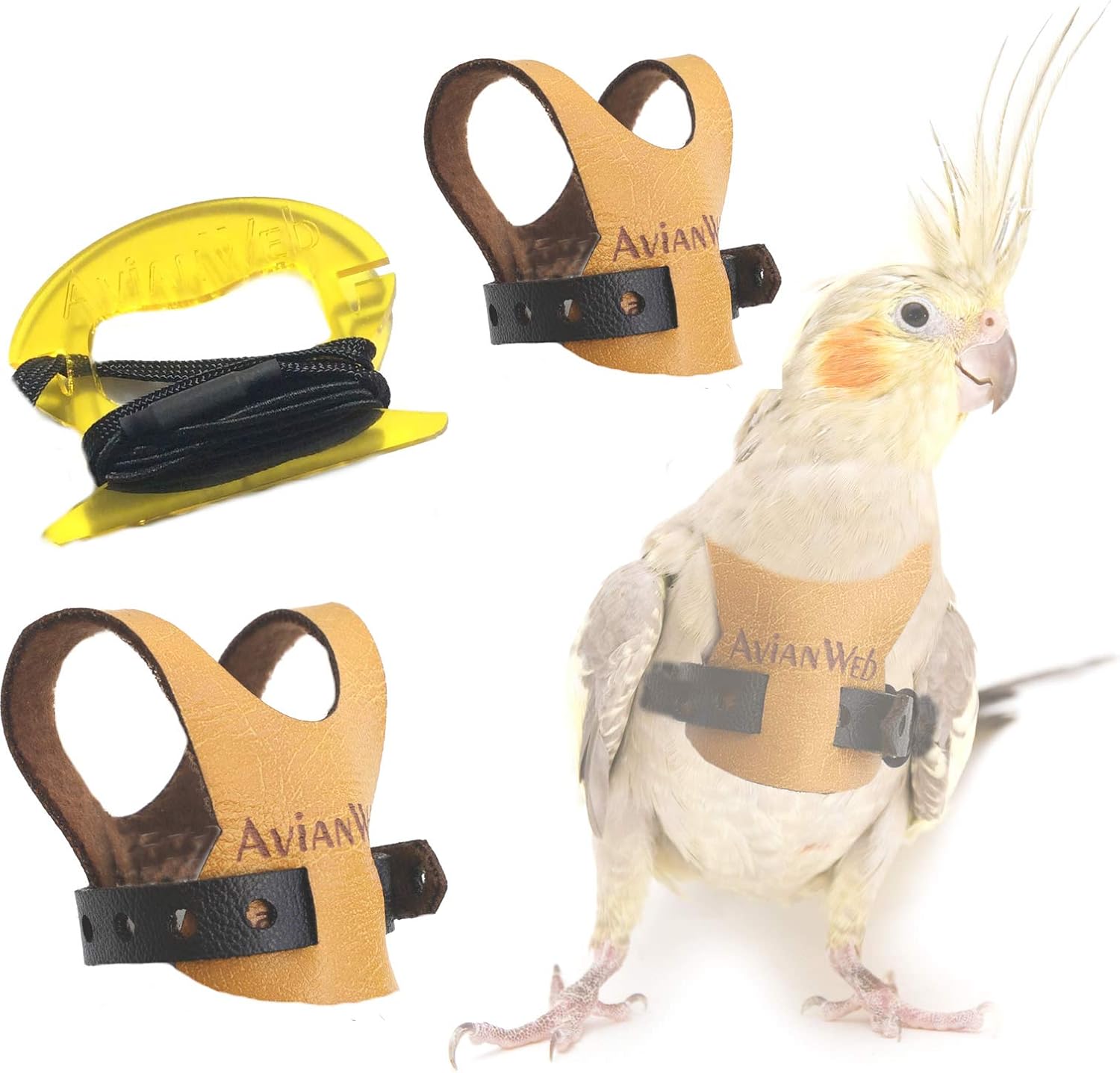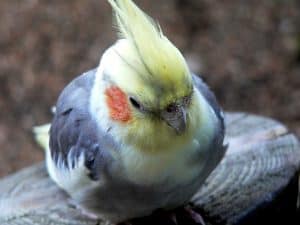Cockatiels are one of the most popular pet birds, known for their cheerful personalities and playful antics. They are a favorite among bird owners and are often kept in a cage as indoor pets.
Can cockatiels wear a harness? Many bird owners wonder if it is possible for their pet cockatiel to wear a harness and experience the world outside their cage. The answer is yes, but it requires proper training and a comfortable bird harness.
What is a Bird Harness?
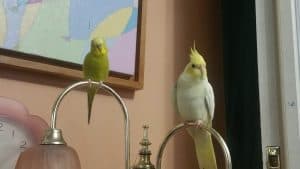
A bird harness is a device designed to control a bird’s movements while outside its cage. It fits around the bird’s body and secures around the chest and under the belly. The harness is usually attached to a bird leash, which allows the owner to control the bird’s movements.
Choosing the Right Size
When selecting a bird harness, it is crucial to choose the right size for your bird. Harnesses come in various sizes, and a proper fit is essential for comfort. An ill-fitting harness can cause discomfort and frustration for the bird, making it difficult to enjoy walks and outdoor activities.
Using a Harness Safely
It is important to use a bird harness safely and responsibly. Make sure to follow the instructions on how to properly fit and install the harness. A poorly fitted or installed harness can cause harm to your bird and may lead to escape. It is also important to choose a harness made of materials that are safe and comfortable for birds, such as comfortable cotton fleece or PVC-free polyurethane.
Harness Training
Harness training is an important step in ensuring the safety and comfort of your bird while wearing a harness. Before attempting to take your bird outside, it is essential to train it to wear a harness.
A Steep Learning Curve
The process of getting a bird harness trained can be a steep learning curve. However, with patience and persistence, nearly all birds can be harness trained. It is important to approach the training process slowly and gradually to avoid causing frustration for the bird.
Positive Reinforcement Techniques
The first step in harness training is to introduce the bird to the harness slowly. Birds can be sensitive to new objects and may fear or dislike the harness. To avoid frustration, it is best to use positive reinforcement techniques such as clicker training and offering rewards during training sessions.
Rewards can be anything the bird loves, such as a special treat or extra feeding time. This encourages the bird to associate the harness with positive experiences and helps to make the training process more enjoyable for both the bird and the owner.
The Best Harnesses for Cockatiels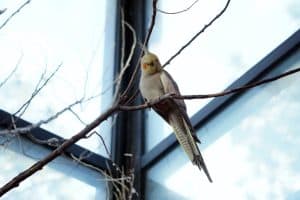
There are several bird harnesses on the market, but the Avianweb EZ Bird Harness is considered one of the best for cockatiels. The Avianweb EZ Bird Harness is a custom-sized harness that is specifically designed for pet birds. It is made of a strong elastic cord and is fitted with a comfortable cotton fleece backing to prevent irritation.
The light but durable elastic cord can endure abrasion and UV sunlight while resisting mildew. It’s also stretchy enough to extend up to twice its length. The harness is also escape-proof and features an abdomen belt that closes securely to prevent the bird from slipping out.
- Cockatiels range in size; therefore, we include 3 sizes of harness - size "4" for small cockatiels; size "4a" (vest only - reuse belts of other harnesses) for intermediate cockatiels and size "5" for large cockatiels (this size also fits SMALL conures). It is easier to train birds on larger harnesses - so having a larger harness will facilitate training. The additional harnesses can be used for other pets. However, only ONE leash is included.
- This item solved challenges of other harnesses: no more pulling wings through loops (which birds hate), easy and intuitive installation of the harness (without a steep learning curve). Note: birds still need to be slowly introduced and HARNESS TRAINED! Please follow instructions. The harness is fitted over the neck; the abdomen belt closes up on the back. A D-Ring (for the leash) automatically slides from the front to the back as a bird is moving around eliminating SUDDEN IMPACT
- The heavy-duty leather-like (Vegan) vest has a comfortable Cotton Fleece backing, which breathes just like genuine leather; it feels like leather, and is easy to maintain (simply wipe to clean). The vest disperses the pressure over a larger area of his body, which puts less pressure on a bird's delicate chest bones.
- LEASH: Included is an 8ft Leash with a light, yet strong elastic cord that stretches up to TWICE its length. A Frustration-free Leash Handle helps avoid entanglement of the bird leash.
Another harness that is suitable for cockatiels is the Frustration-Free Leash Handle bird harness. This harness is made of a PVC-free polyurethane material and is easy to install, making it an excellent choice for bird owners who are new to harness training. The material is also breathable, ensuring that the bird stays comfortable while wearing it. Unlike nearly all faux leathers, this particular material is toxin-free and does not contain any hazardous chemicals.
The Dos and Don’ts of Walking Your Cockatiel with a Harness
Once your cockatiel is harness trained, you can begin taking it for walks. However, it is essential to follow certain dos and don’ts to ensure the safety of your pet.
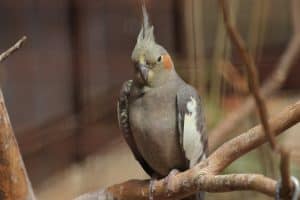
Do:
- Start with short walks and gradually increase the length of the walks as your bird becomes more comfortable with the harness.
- Slowly introduced your cockatiel to different environments and let it explore at its own pace.
- Use a leash that is only twice the length of your bird, this will prevent your bird from flying too far away from you.
- Pay attention to your bird’s behavior and body language. If your bird appears nervous or frightened, take it back to its cage immediately.
- Offer rewards and praise to your bird during and after walks.
Don’t:
- Don’t force your bird to wear the harness or walk if it does not want to.
- Don’t let your bird fly too far away from you or let the leash accidentally get caught on something.
- Don’t expose your bird to UV sunlight for extended periods as this can be harmful to its skin and eyes.
- Don’t use harnesses or leashes made of genuine leather as they can be uncomfortable and harmful to birds.
- Birds hate loud noises, so try to avoid taking your bird to areas with lots of noise.
To have no more pulling wings and struggle, it is important to monitor your bird’s reactions and feelings. If the bird appears uncomfortable or scared, take off its harness immediately. Never leave your bird unattended while wearing a harness and leash as this can be dangerous.
Final Thoughts: Can Cockatiels Wear a Harness?
In conclusion, cockatiels can wear a harness and go for walks, but it requires proper training and the right type of harness. With the right training and patience, most birds can be harness trained, and the experience of walking your pet cockatiel can be a worthwhile reward.
Just make sure to follow the dos and don’ts of walking your bird and to follow the instructions on how to properly fit and install the harness. The whole process may take some time, but with a positive attitude and persistence, your pet bird will soon be enjoying its walks in a custom-sized harness that is both comfortable and safe.
For other related articles:
